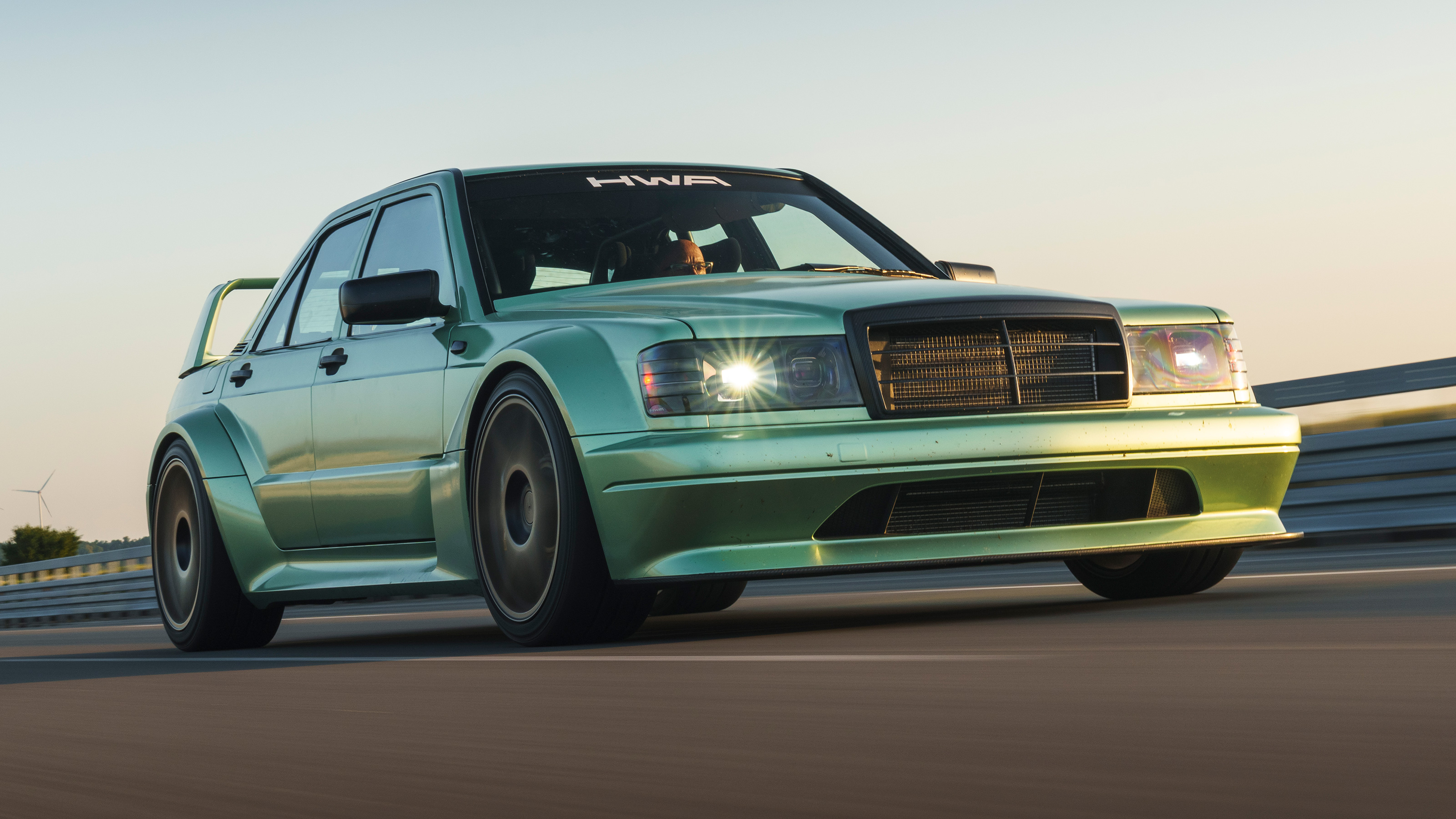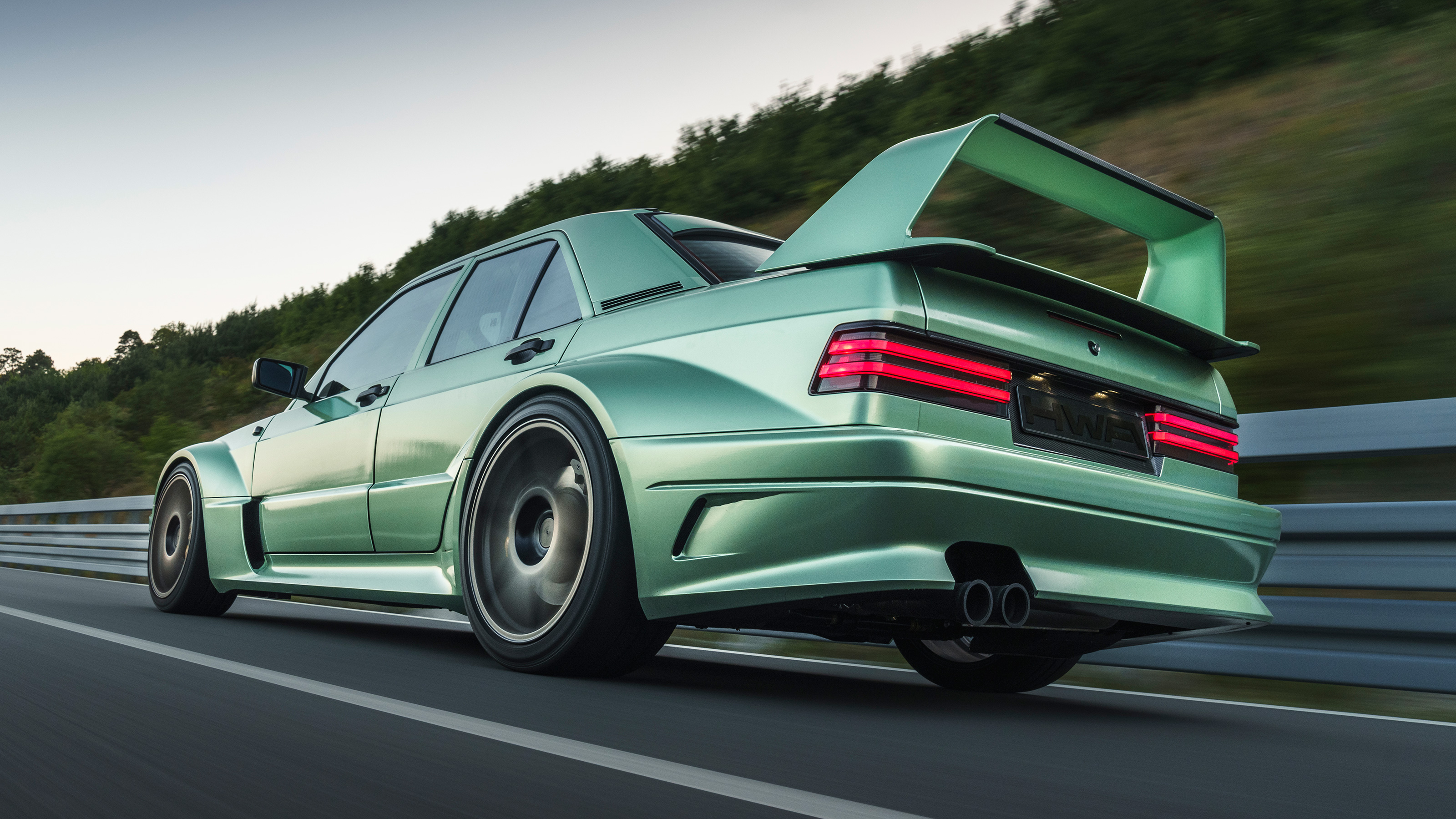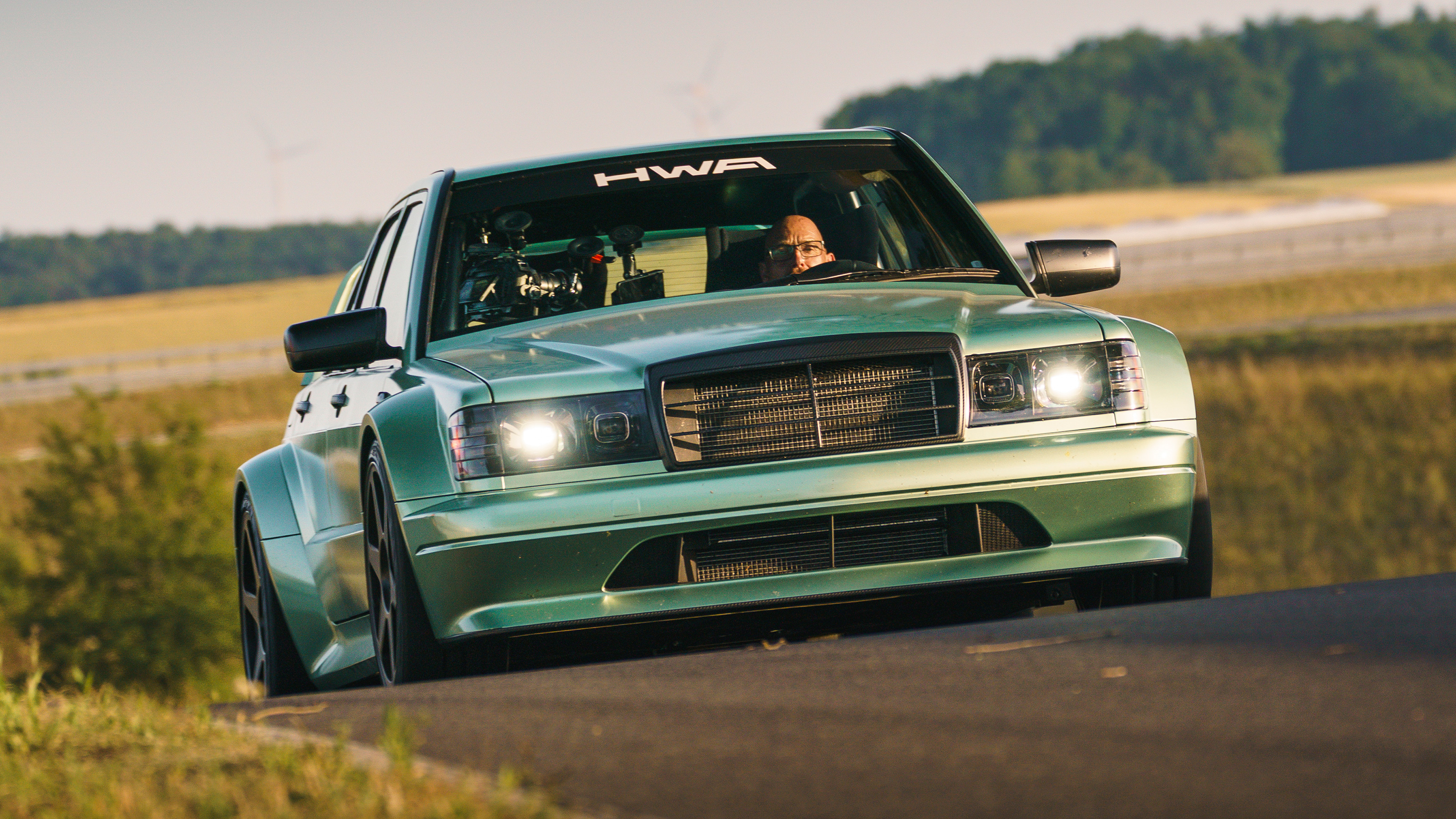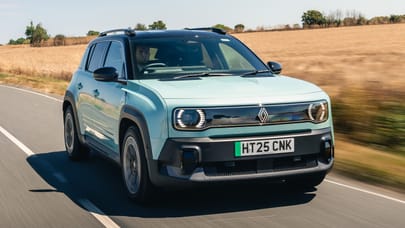
HWA Evo review: sacrificial 190e gets the Evo II treatment
This HWA Evo is one cool looking car.
Amazing what a towering rear wing, a good colour and proper stance will do to an old Mercedes 190e. Restomod is the word you’ve been thinking, but you need to unthink it. In the meantime yes, those are some of the best arches since the Romans built the Colosseum.
But this is a restored and modified 190e Evo II isn’t it?
Obviously it’s riffing on that 1990 DTM homologation special, but none of the 502 that were built originally has been sacrificed in the name of creating this. Instead it starts life as a sacrificial 190e, and that’s fine seeing as Merc built some 2,000,000 of those.
Now, we did do a deep dive on this project last year, and made a full walkaround film, so if you want proper nitty gritty details check that out. I’m going to skate over some of that to focus on what it’s like to drive this prototype.
The only prototype I’m guessing? I can’t imagine HWA has the funds to build more than that.
You’re under-estimating HWA’s engineering capacity. I know I said I wasn’t going to repeat myself, but here’s a quick recap: HWA is named after Hans-Werner Aufrecht (who, in a previous life, was also the ‘A’ in AMG). In partnership with Mercedes it has been one of the most successful race teams across DTM, GT3, even Formula E.
And it’s where hypercar firms come when they need a hand: HWA did the nat asp V12 for the Pagani Huayra R, engineered the stillborn Fittipaldi EF7, and is currently working on the De Tomaso P72.
The correct interpretation of all this is that HWA does things properly. So not one single prototype, but eight. The last two will be crash tested, four, five and six will do all sorts of dynamic development. But the first three are with Bosch for electronic development. And this green car is, as a sticker under the bonnet proclaims, prototype number 1.
It looks pretty finished on the surface.
It’s a different story underneath. The cabin is a sprawl of wires, gauges, red buttons, cables and instrumentation, every surface wears temperature strips, there’s giant race seats, a non-standard roll cage and the boot is full of electronic boxes.
We’re at Boxberg, Bosch’s top secret test track about an hour north of Stuttgart. It’s a corking facility with a banked outer circuit wrapped around a litter of other surfaces, inclines, trails and tracks.
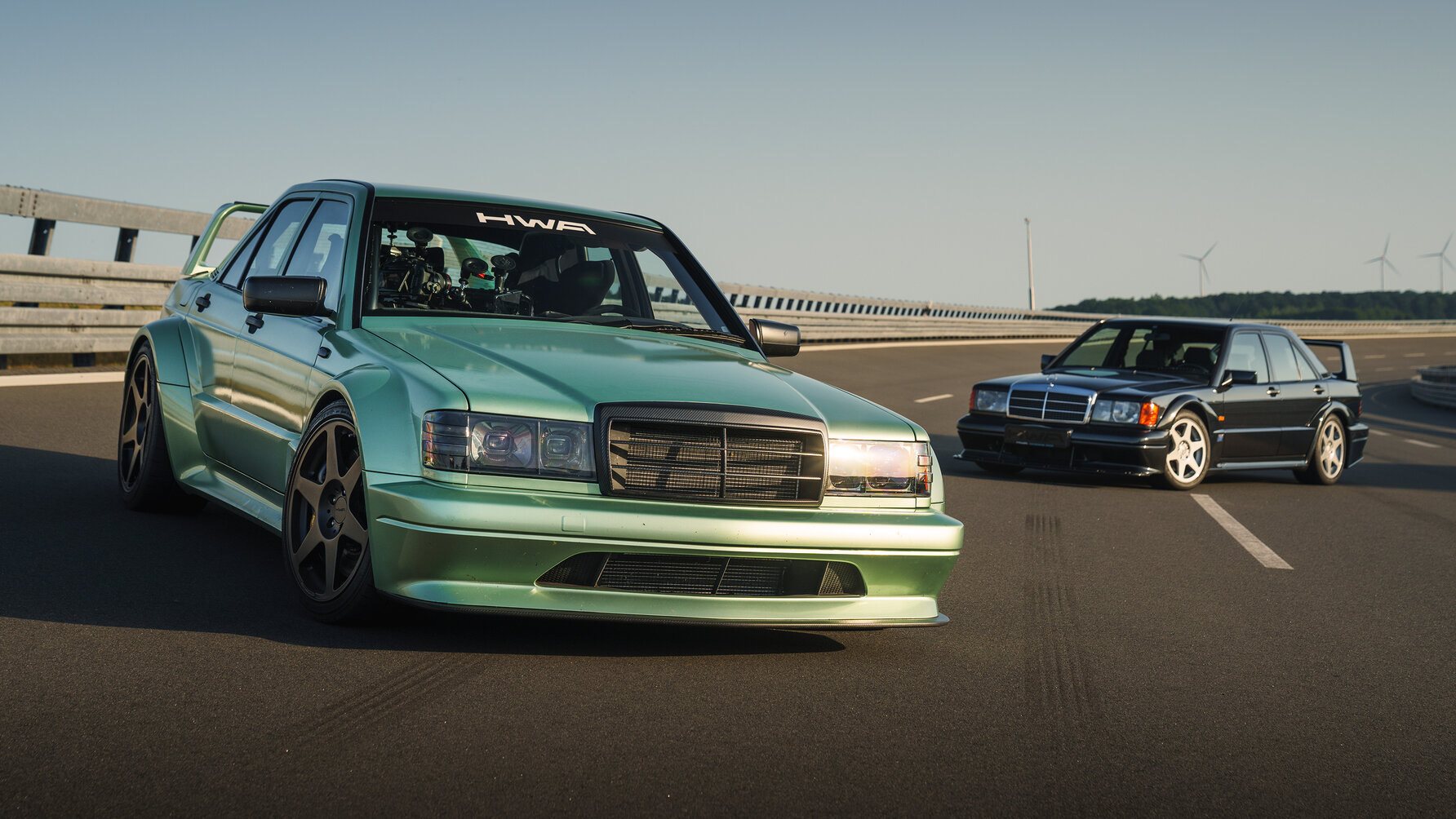
Before I can drive I have to wait for everything else to finish for the day. There’s all sorts here, but an intimidating piece of paperwork I’ve signed insists I can’t tell you what.
Pity. So come on then, what’s it like?
It shows huge promise. The engine is a modified version of Merc’s M276 3.0-litre twin turbo V6 that’s found in lesser AMGs such as the SLC 43. I’ve never been blown away by it, but here it’s been uncorked with new turbos, induction and exhaust. It sounds fabulously raspy, yet revs unbelievably smoothly. Barely a vibration to be felt.
Top Gear
Newsletter
Thank you for subscribing to our newsletter. Look out for your regular round-up of news, reviews and offers in your inbox.
Get all the latest news, reviews and exclusives, direct to your inbox.
Too smooth, too linear in its delivery, reckons HWA. At the next stage of development the intention is to make the turbos less linear, to introduce a bit more lag, more turbo-ness. It’s not intended to be a modern car, so they don’t want it to feel like one.
I’m limited to 5,000rpm, which is about the point the V6 starts to get interesting and the engine note hardens. So I don’t have the full ticket of power – which will now be upwards of 500bhp. 450bhp was the original plan, but there’s been some mission creep and where once the intention was to leave the internals alone, now HWA is tinkering with conrods and pistons. It’s not especially fast right now, but ultimately should have a power to weight ratio of over 370bhp/tonne, which is about bang on with the 656bhp bruiser that is the current Aston Martin Vantage.
So it’s light then?
Just 1,350kg is the plan – the same as the original Evo II. That was steel bodied, this is full carbon. The front and rear subframes are entirely new to improve stiffness and crash protection. The bodyshell feels very rigid, giving the suspension a strong central platform to work from.
There’s a bit of bodyroll, but it’s comforting and true to its heritage, and as you push through that the car takes up an edge through corners, working both axles equally. It really does feel like you’re sat centrally in the wheelbase with the car pivoting around you – probably a legacy of the front wheels being pushed forward 50mm.
It’s got a manual gearbox, hasn’t it?
Yeah, but like the rest of the controls, it hasn’t been polished at all yet. Everything you operate is too light. A lot of this is purposeful to lower the effort levels the development drivers have to put in when they are spending hours and hours at the wheel each day.
So the gearlever flicks lightly about the gate. It’s a short, accurate throw, but needs more meat and weight to suit the car. Same goes for the steering and brakes. Especially the brakes, which currently have zero feel and not much more than zero power. Until your foot is near the bulkhead at which point they bite hard.
But this is a development car, and all of this is to be expected. To be honest, I’m only amazed by how composed it is considering this is the very first. HWA’s Chief Technology Officer, Gordian von Schoning reckons cars four, five and six, which are in build now, are a huge leap forward. Car nine, after the two crash test cars, will be the first production intent car.
What cars does it put you in mind of?
Before I drove it I assumed there would be AMG overtones, but this is not a muscle saloon like a C63, it’s more finessed and nuanced than that. There’s already a Porsche-like precision to the way it moves, which I suspect is largely due to the fact it’s relatively compact, doesn’t weigh much and comes from a similar motorsport mentality.
This is not a muscle saloon like a C63, it’s more finessed and nuanced than that
I tell you what, on these initial impressions it drives exactly like you hope a recreated version of the Evo II would drive. With crispness, authority, accuracy and enough charisma to see which way AMG would end up taking its hot road cars. Before they decided the best approach was a hybridised four cylinder.
I think I’d have an original Evo II.
I completely understand that. It’s a legend, but first you need to know two things: it’s not very fast and it’s a lot of money.
The engine is a nat asp 2.5-litre four cylinder with about 230bhp (probably less these days) so 0-60mph takes around seven seconds. Which is going to feel anaemic in 2025. And because they only made 502 (the original intention was 500, all painted the same Blauschwarz metallic, but then Merc built two extra silver cars because they could), a good one nowadays is around £350,000.
As I said, being a legend back then means it’s an investment now. I haven’t driven one, but having had a good nose around it, the new one floats my boat in a way the original doesn’t quite.
How long will development take?
First customer deliveries are planned for early next year, which means Bosch’s development schedule is tight and HWA is going to have a very hectic next 12 months. But then they’re a race team, they’re used to tight deadlines. And once this is done, they get to take it racing anyway. But that’s another story.
Featured

Trending this week
- Car Review
BMW iX3




